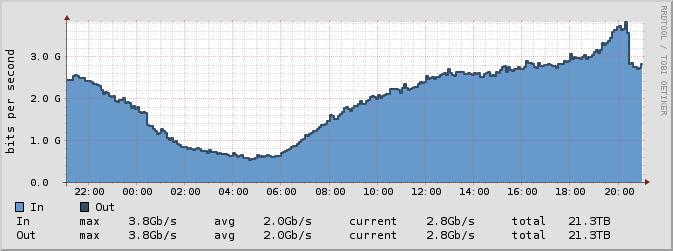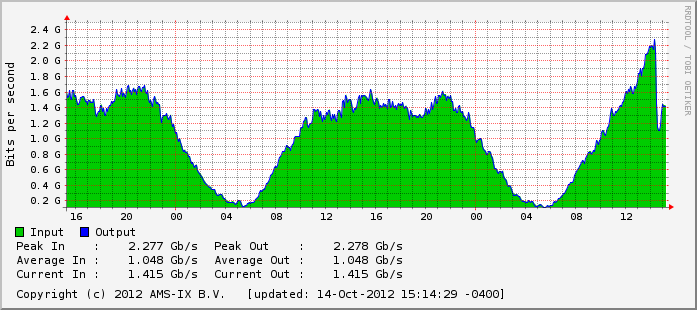If anyone ever wants to register a .co.za domain, it looks like you’ll have three options going forward (from the near future):
- run away screaming
- commit suicide
- pay someone else to do it
That’s if we skip over the other practices they have, like refusing to allow you to register a domain if the NS records don’t exist on some servers yet (think about the workflow some DNS hosters take, this might at times be a perfectly normal scenario), or the weird whois setup that still seems to be the default server for most whois clients in the world.
Alongside my froztbyte.net domain, I also have a froztbyte.co.za from before I had a credit card. It’s useful for some stuff. But wow, dealing with coza is a trip. First, they only recently made an EPP interface available, and a quick scan-over of it looks like you need to be a registered/accredited registrar to use it, weighing in at R5000 (presently that’s just below 500eur). No matter, it’s not like I’m going to go find an EPP implementation now to do this. So the antiquated *email* interface it is.
Wander over to their website, grab the update form for my domain, edit it with the new NS info, submit. Wait.
mail:/var/log# tail -n 500 exim4/mainlog | grep 1TEc0u-0003kD-QC
2012-09-20 10:21:36 1TEc0u-0003kD-QC <= jp@domainiwanttoupdate.co.za H=(vandali.neology.co.za) [2001:43e8:8:1::x:x:x:x] P=esmtp S=8582 T="test Thu, 20 Sep 2012 10:21:16 +0200" from <jp@domainiwanttoupdate.co.za> for coza-admin@co.za
2012-09-20 10:21:38 1TEc0u-0003kD-QC == coza-admin@co.za R=dnslookup T=remote_smtp defer (-44): SMTP error from remote mail server after RCPT TO:<coza-admin@co.za>: host mx2.coza.net.za [82.103.142.199]: 450 4.2.0 <mail.neology.co.za[41.73.33.140]>: Client host rejected: Greylisted, see http://postgrey.schweikert.ch/help/co.za.html
2012-09-20 10:22:25 1TEc0u-0003kD-QC == coza-admin@co.za routing defer (-51): retry time not reached
2012-09-20 10:29:29 1TEc0u-0003kD-QC == coza-admin@co.za R=dnslookup T=remote_smtp defer (-44): SMTP error from remote mail server after RCPT TO:<coza-admin@co.za>: host mx2.coza.net.za [82.103.142.199]: 450 4.2.0 <mail.neology.co.za[41.73.33.140]>: Client host rejected: Greylisted, see http://postgrey.schweikert.ch/help/co.za.html
2012-09-20 10:32:05 1TEc0u-0003kD-QC == coza-admin@co.za R=dnslookup T=remote_smtp defer (-44): SMTP error from remote mail server after RCPT TO:<coza-admin@co.za>: host mx2.coza.net.za [82.103.142.199]: 450 4.2.0 <mail.neology.co.za[41.73.33.140]>: Client host rejected: Greylisted, see http://postgrey.schweikert.ch/help/co.za.html
2012-09-20 10:32:25 1TEc0u-0003kD-QC == coza-admin@co.za routing defer (-51): retry time not reached
2012-09-20 10:34:01 1TEc0u-0003kD-QC == coza-admin@co.za R=dnslookup T=remote_smtp defer (-44): SMTP error from remote mail server after RCPT TO:<coza-admin@co.za>: host mx2.coza.net.za [82.103.142.199]: 450 4.2.0 <mail.neology.co.za[41.73.33.140]>: Client host rejected: Greylisted, see http://postgrey.schweikert.ch/help/co.za.html
So I end up actually phoning my domain registrar, in 2012, to find out how long I need to wait. “Up to 45 minutes”. A few exim queue flushes later, the mail went through. Now I should receive the mail that allows me to respond with the the auth cookie. Oh, wait, no:
| COZA: ERROR: Invalid phone number format supplied for the registrant phone or fax numbers “froztbyte.co.za”. |
I first have to have a validation failure, because the data THEY SUPPLIED doesn’t confirm to their validation schema. This is also not a new thing. They’ve had various schema updates over various points of the ccTLD lifetime, and it’s often just a case of “struggle with it until you get it working”.
Now, given, they seem to have acknowledged that they fail at life as a registrar, thus the new EPP setup and accredited registrars. But for crying out loud, make some reasonable interface for people who aren’t on that system yet. Maybe I’ll do the effort of finding a good registrar….or but I’ll just stop caring about .co.za domains forever and move my stuff elsewhere.

